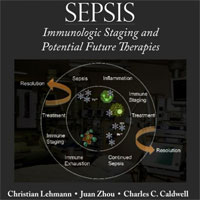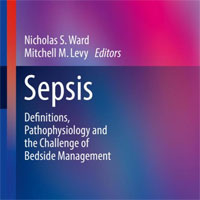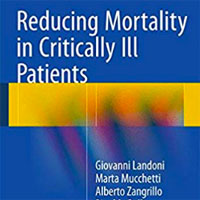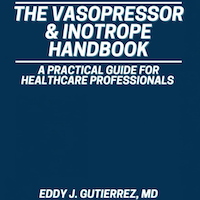Tag: cardiac arrest
Levosimendan Role in ECMO for Refractory Cardiac Arrest
Levosimendan use in extracorporeal cardiopulmonary resuscitation (ECPR) did not improve survival. Neurological outcome could be representative of the short- and long-term outcomes. Future well-designed randomized trials... read more
Fever Management with or without a Temperature Control Device After OHCA and Resuscitation
the TEMP‐CARE trial will advance our understanding of post‐cardiac arrest care fever management strategies. With a large sample size and a broad patient population, the results of this trial will inform clinical practice... read more
Multi-dimensional Outcomes Following ECPR
Recent trials suggested that extracorporeal cardio-pulmonary resuscitation (ECPR) with veno-arterial extracorporeal membrane oxygenation (VA-ECMO) or "ECMELLA" (VA-ECMO plus Impella) may improve short-term survival and neurological... read more
Favorable Outcomes When Using Prolonged CPR Combined with ECPR
Extracorporeal CPR (ECPR) combined with continuous renal replacement therapy (CRRT) successfully rescues a patient who experienced sudden cardiac arrest for 152 minutes. ECPR is an effective and advanced form of extracorporeal... read more
Rediscovery of Acute Lung Injury in Cardiac Arrest
Systemic multi-organ injury following resuscitation from sudden cardiac arrest (CA) has long been recognized. First termed 'post-resuscitation disease' in the 1980's this systemic injury was more appropriately re-named post-CA... read more
Sodium Bicarbonate In In-Hospital and Out-of-Hospital Cardiac Arrest
Cardiac arrest is a common cause of death worldwide. Sodium bicarbonate (SB) has commonly been used during cardiopulmonary resuscitation (CPR) to correct metabolic acidosis (MA). However, the existence of evidence about its... read more
Hypothermic Cardiac Arrest: Prognostic Factors for Successful Resuscitation Before Rewarming
Patients with core body temperature ... read more
ICU Cardiac Arrest Among Very Elderly Critically Ill Patients
The occurrence of ICU-CA in critically ill patients with advanced age (≥ 90 years) is relatively rare. The observed mortality in the ICU and hospital was exceedingly high. Notably, providing cardiopulmonary resuscitation... read more
Outcomes for Mechanically Ventilated Patients with Acute Myocardial Infarction Admitted to Medical vs Cardiac ICUs
In this multicenter, national analysis of ICU admission for critically ill patients with AMI, we found that admission to the Cardiac Intensive Care Unit (CICU) was associated with lower in-hospital mortality than patients... read more
Cardiac Arrest During a Ferric Derisomaltose Infusion Followed by Complete Heart Block
Bradycardia and heart block are rarely reported in the parenteral iron literature. Although rare, it may be reasonable to consider parenteral iron as a toxicological etiology for patients presenting with complete heart block... read more
Cardiac Arrest Following Prone Positioning
The complications that can arise from the prone position are often underestimated. Proceduralists, surgeons, and anesthesiologists need to be thoroughly knowledgeable about the common physiological changes that can occur... read more
EEG Patterns for Predicting Poor Outcome After Cardiac Arrest
The specificity of the ERC-ESICM-recommended EEG patterns for predicting poor outcome after cardiac arrest exceeds 90% but is lower than in previous studies, suggesting that large-scale implementation may reduce their accuracy.... read more
ECPR for Hypothermic Refractory Cardiac Arrests in Temperate Climates
Accidental hypothermia designates an unintentional drop in body temperature below 35 °C. There is a major risk of ventricular fibrillation below 28 °C and cardiac arrest is almost inevitable below 24 °C. In such cases,... read more
Rescue TEE Might Diagnose Cardiac Arrest Faster
A Penn Medicine team is testing whether a new technology that gives live ultrasound images from inside a patient during CPR can help doctors get those answers faster. The device, called Rescue TEE, uses a tiny camera at the... read more
IHCA Variation Throughout the Day
We observed higher rates of hospital cardiac arrest (IHCA), and poorer outcomes at night. However, in those admitted to ICU, this variation was absent. This suggests patient factors and processes of care issues contribute... read more
Family Presence During Cardiac Arrest Resuscitation
This systematic review identified four key findings. Firstly, there was a lack of high-quality evidence on the impact of family presence during resuscitation on patient outcomes. Secondly, family members had varied... read more
Blood-Pressure Targets in Comatose Survivors of Cardiac Arrest
Targeting a mean arterial blood pressure of 77 mm Hg or 63 mm Hg in patients who had been resuscitated from cardiac arrest did not result in significantly different percentages of patients dying or having severe disability... read more
MECA in Medical Emergency Situations Significantly Reduced Failure Rates
In our simulation, the use of medical emergency cognitive aid (MECA) in medical emergency situations significantly reduced failure rates. The use of MECA was widely accepted, and MECA were easy to use. In a high percentage,... read more
AI Predicts If And When Cardiac Arrest Will Happen
Sudden cardiac death from arrhythmia is a major cause of mortality worldwide. In this study, we developed a novel deep learning (DL) approach that blends neural networks and survival analysis to predict patient-specific survival... read more
Epinephrine vs. Norepinephrine in Cardiac Arrest Patients with Post-resuscitation Shock
Among patients with post-resuscitation shock after out-of-hospital cardiac arrest, use of epinephrine was associated with higher all-cause and cardiovascular-specific mortality, compared with norepinephrine infusion. Until... read more
Physiologically Difficult Airway Evaluation
Multiple international airway societies have created guidelines for the management of the difficult airway. In critically ill patients, there are physiologic derangements beyond inadequate airway protection or hypoxemia.... read more
Guidelines on Temperature Control After Cardiac Arrest in Adults
The aim of these guidelines is to provide evidence‑based guidance for temperature control in adults who are coma‑tose after resuscitation from either in-hospital or out-of-hospital cardiac arrest, regardless of the underlying... read more









